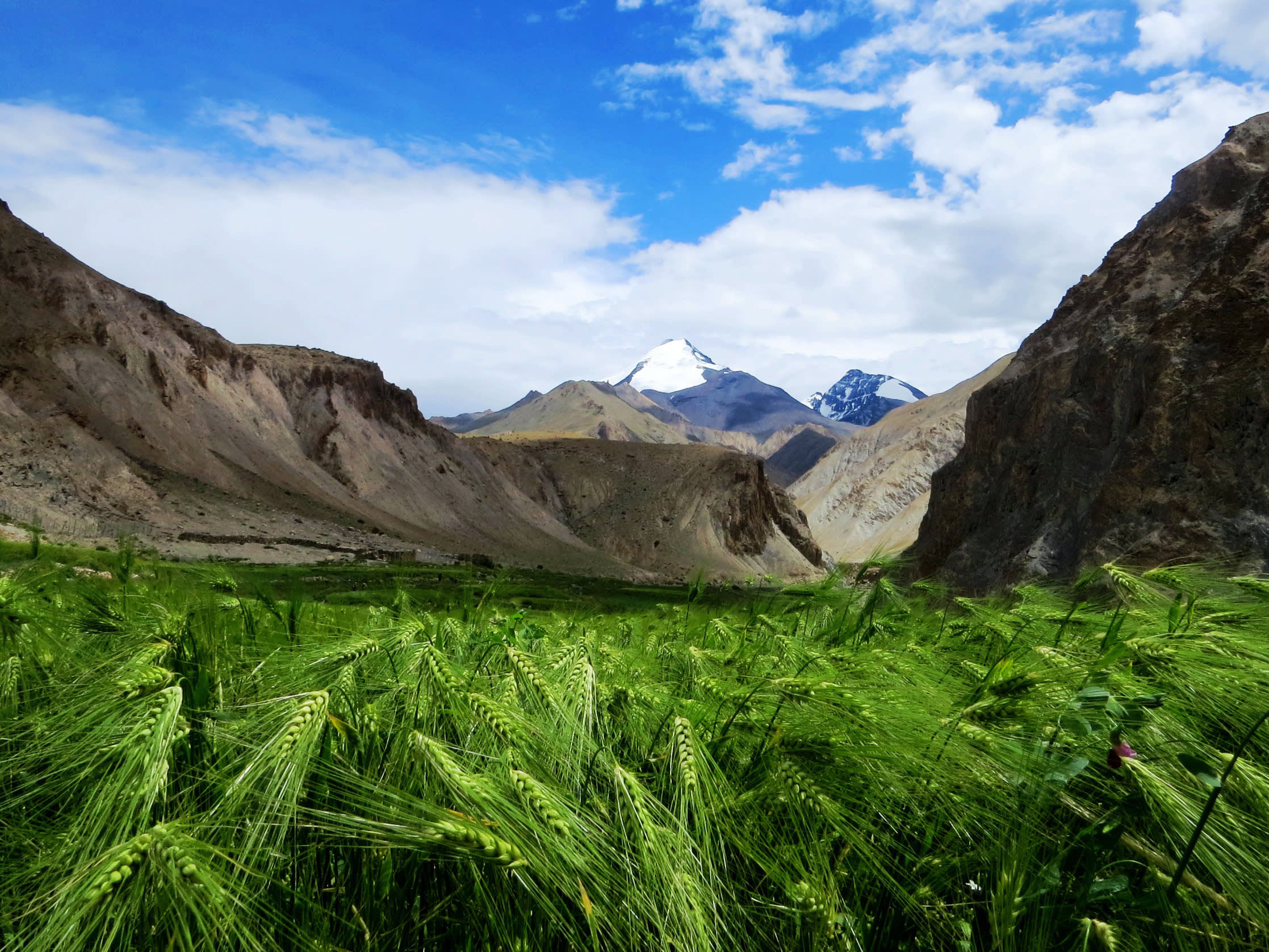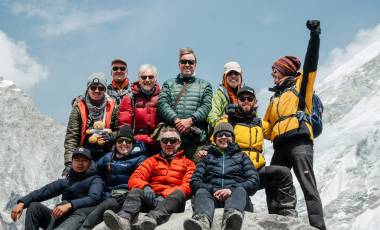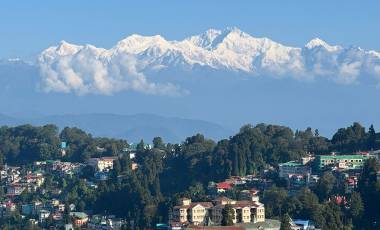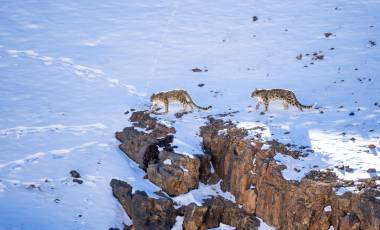Read time – 4 minutes
A brisk wind races through the high passes, scattering prayer flags flapping and fluttering against the sky. The haunting echo of footsteps tracing the corridor of a Buddhist monastery is swept away, the sun streams down over the lush green tea plantations of Darjeeling.
Somewhere more secretive, the elusive shadow of a snow leopard slips out of view.
The Himalaya
Stretching 2,400km across Northern India, Nepal and Tibet as far as Bhutan, the Himalaya is the longest and highest mountain range on Earth. Yet for many, it consists of just one small corner near Mount Everest.
After 29 summers spent trekking the lesser-known Indian Himalaya, I can’t help but wonder why this is. With some of the most magnificent mountain scenery on Earth, and no less impressive than its Nepalese neighbour, this could be the world’s best adventure travel destination.
Ironically, its status as an unsung hero works in its favour for those who venture here, greeted by deserted trekking trails, isolated valleys and less-visited towns with far fewer tourists.
Ladakh Trips
Exodus has been running trips to Ladakh, Darjeeling and Sikkim since the late 1970’s and has a wealth of experience in the area. Situated on the Tibetan Plateau, June to September is the best time to travel to Ladakh as the days are hot and sunny and the evenings mild.
All of our Ladakh trips have at least one flight over the Himalaya. Transported in an hour from the heat and humidity of Delhi at sea level to the literally breath-taking altitude of Leh at 3,500m you soar over the Indian Himalaya – one of the most spectacular mountain flights on Earth.
Acclimatisation is the order of the day for the first few days in Leh the tiny capital of Ladakh, or ‘Little Tibet’, as it is more commonly known. Overlooked by the ruins of a 16th century palace, reminiscent of the grander Potala in Lhasa, it’s a great place to wander and get used to the rarefied air.
Ladies dressed in traditional dress sit by the roadside selling delicious fresh apricots and wonderful organic vegetables. Ladakhis, Kashmiri, Dards, Tibetans and a whole host of ethnic groups mingle in the bazaar selling prayer wheels, singing bowls, silk carpets and colourful pashmina shawls, woven from the hairs of the high altitude goats that thrive in the surrounding hills.
As part of the acclimatisation, there are also gompas to be seen and Buddha’s to be contemplated. One of the last bastions of Tibetan Buddhism, the religion is still alive and kicking and at least a day ‘gompa stomping’ is part of every trip. Highly recommended is a trip to the Khardung La – supposedly the highest motorable road pass in the world at 5602m.
Now disputed by the modern-day GPS, but what’re a few meters anyway? – its ideal acclimatisation and a mesmerising drive to the top, flanked by the Karakorum to the north and the Himalaya to the south. Or if you’ve been caught up in recent year’s unstoppable cycling surge, you can make your way by pedal power.
Iconic Treks
The Markha Valley is the closest to the classic Ladakh trek. Close to Leh but far enough away that it is fairly untouched by the modern world, for seven days the horizon is a series of spectacular gorges and through amber and ochre mountains, crystal-clear streams to small farming communities clinging to a traditional way of life.
It’s one of my favourites. Overhead, birds wheel through the sky – Lammergeyers and Golden Eagles are especially dramatic as they ride the thermals, whilst on the ground Blue Sheep scamper amongst the crags and furry marmots and peep from their burrows.
Part of the Hemis National Park, a lot has been done in this area to preserve the wildlife here. Vibrant green barley fields contrast with the purples, blues and browns of the surrounding mountains and even though the hillsides look barren at first glance, close up the slopes are scattered with flowers.
 Barley fields on the Markha Valley trek
Barley fields on the Markha Valley trekHead for any of the minuscule monasteries here and the same ritual welcome will greet you: a cheerful insistence that you sample the traditional yak butter tea; an acquired taste to be sure, as is the chang, the local homebrew.
Hydration is essential to acclimatise, and if you want a more ordinary drink then Exodus has been working with the Youth Association for the Conservation and Development of the Markha Valley to provide safe drinking water for trekkers (in the form of UV filters). Since 2012 we have banned the use of plastic mineral water bottles in the park, making it both safe and eco-friendly to trek here.
For those wanting more of a challenge, the Grand Traverse of the Indian Himalaya might just be the best off-the-beaten-track hike in the entire world. Head from north to south, traversing the Tibetan Plateau and the Himalaya into the remote area of Spiti. If you crave far-flung wildernesses, quiet paths and huge expanses of wide, exposed skies and stark beauty, you need to put this trek on your list immediately.
For those wanting a short, sharp success story, Stok Kangri Climb takes each trekker on an 8-day trek through the mountains, wild camping each night and views across the Indus Valley by day, all leading up to the ascent of Stok Kangri at 6,141m.
If the lure of summit day, the euphoria of success and phenomenal expanse of mountains stretching out as far as the eye can see isn’t enough to tempt you, perhaps the promise of a moist, sticky chocolate cake reward for your efforts will sustain you through any uneventful training sessions at the gym.
At the opposite end of the Indian Himalaya is Darjeeling and Sikkim, with its faded Raj splendour, tea plantations and Tibetan culture. Often overlooked, the Singalila Ridge is my favourite ridge walk in India, and a trekker is never more than a stone’s throw away from a fresh cup of that “champagne of teas”, Darjeeling.
Meandering through the lush, shoulder-high plantations feels like walking in a vibrant sea of emerald green leaves. With views of Everest and Kanchenjunga, this is far less demanding trek at low-altitude that gives the chance to visit the cultural hubs of Sikkim and Kalimpong along the way.
View our trips below and put Ladakh and the Indian Himalayas next on your bucket list.

 Trekker in Ladakh
Trekker in Ladakh Leh Palace
Leh Palace






